The height of summer may seem an odd time to be writing about polar bears. But, this time of year best demonstrates the questions and concerns of confining these great Arctic predators in a place like Boston. This was particularly true in the time that polar bears first arrived. It was an era in which concern for some captive animals' welfare was less well developed than it is now.
The collections of the Boston Public Library have much to teach us about the lives of these and other animals that have lived in captivity in the City of Boston. Their confinement allows for scrutiny that reminds us of the individuality of every animal that inhabits this planet.
Setting the Stage
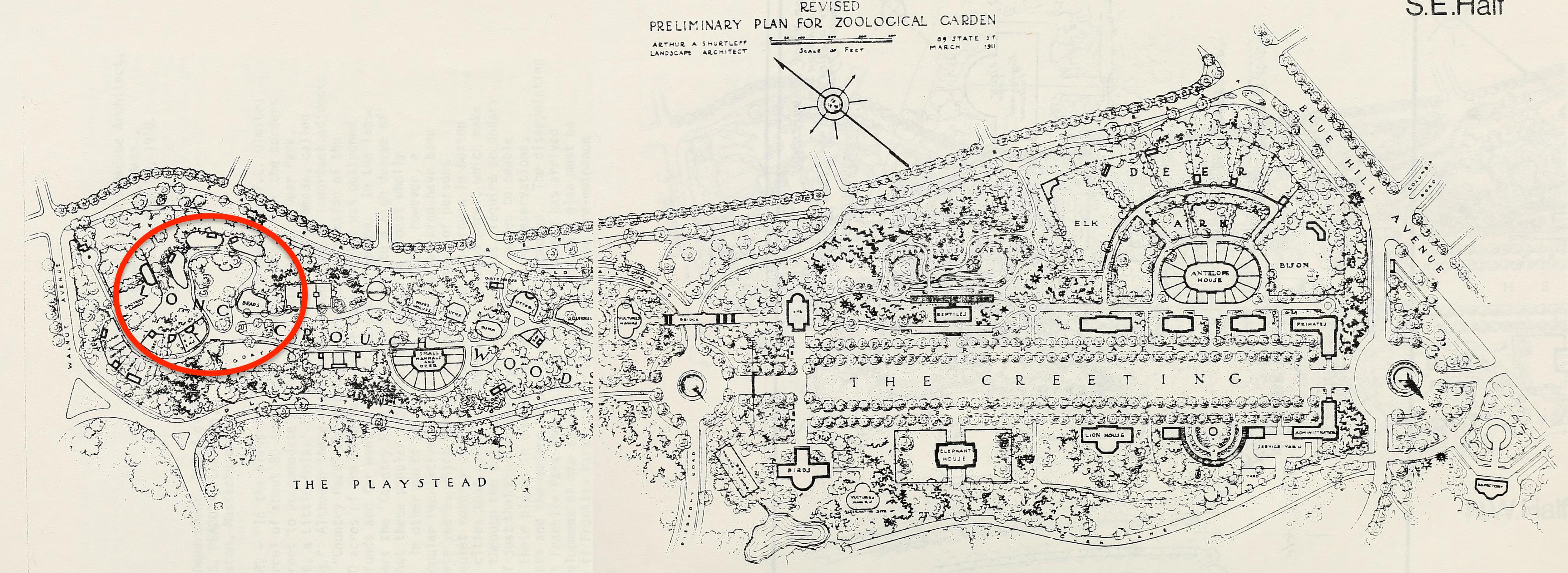
The original Franklin Park Zoo opened in 1912 and was built at public expense. Its main designer, Arthur A. Shurtleff expanded upon Frederick Law Olmsted's original plans for the area, and created an elaborate plan for a 'zoological garden' stocked with a wide range of animals from around the world. A major part of the new zoo was its series of bear enclosures, located in the northwest part of the zoo in Long Crouch Wood.
One of these enclosures was intended for polar bears. According to an August 20, 1912 Boston Globe article, a system would be set up for that enclosure "whereby the water will be kept ice cold during the Summer so that they will not suffer from the heat."
Polar Bear Trafficking
That same article reported two polar bears, indented for the zoo, arrived the previous day in Boston. They arrived, in the company of four Eurasian brown bears, on the steamer Bulgaria from Hamburg, Germany. Hamburg was the base of operations of the Hagenbecks, a family of animal traders that gathered animals captured from all over the world and sold them to zoos, circuses, and traveling animal shows. One member of the family, Carl Hagenbeck Jr., was also known for exhibiting indigenous people from Africa, the Arctic, and the Pacific Islands in his zoo (see Rothfels, Savages and Beasts).

The Hagenbecks would go on to supply at least two other polar bears to the zoo in later years, and they weren't the only suppliers whose practices would now seem questionable at best. Some other types of bears were even captured in Yellowstone National Park and given to the zoo directly by the US government, an unthinkable act today.
Living in Franklin Park
The first two polar bears to come to the Franklin Park Zoo were given the names 'Pasha' and 'Fatima.' The bear enclosures were 'opened' to the public on October 3, 1912. Mayor Fitzgerald himself presided, and from then on the polar bears began to acquire a reputation. A June 30, 1913 Globe article described the polar bears as "disgruntled," noting absurdly that they "persistently refuse the products of civilization" and scolding them for failing to "perform for the children."
'Pasha' in particular became known for a tendency to charge the bars of the enclosure when photographers came around. The Globe called the polar bears the "only animals in the zoo that are always ugly, even to their keeper" (5 Sept. 1920, p.14). That keeper, for a time, was Paul Spiesert, who was an export of the Hagenbeck regime. Little changed in later years, as a 1938 article called a later group of polar bears "deliberate and crafty killers" that "never can be trusted."
Journalists noted that the bears must miss their Greenland home, and granted wryly that the "bear dens are declared to be the finest in the world, at least from the standpoint of those who do not have to live in them." However, the question of whether it was right to have abducted these creatures and subjected them to confinement far from home never seems to have been genuinely considered.
These remarkable photographs were taken by Leslie Jones, a Boston Herald-Traveler photographer. Though many of his polar bear photos lack the names given to the bears by humans, some of them certainly depict the individuals we know as Pasha and Fatima.
Handling the Heat
After 14 years of captivity 'Pasha' died, according to the Globe, "from the heat" in the summer of 1925 or 1926 (the 1926 article is a little ambiguous). It was noted too that he had "suffered greatly" every summer from the high temperatures. His skin, removed upon his death, somehow found its way onto the floor of the executive office of Mayor Nichols, who apparently promised it to the Children's Museum in Jamaica Plain. That same year, the Globe praised a California woman who shot 29 polar bears on an expedition to the Arctic.
The years that followed saw a journalistic effort, so persistent as to seem planned, to convince readers that the heat in fact posed the bears no threat. The following assertions appeared in the Boston Globe:
- "Polar Bears Never Mind High Temperatures" (July 25, 1929)
- "Most people pity these Arctic animals in summer, but their sympathy is wasted." (May 24, 1931)
- " Much unnecessary sympathy is wasted on the zoo's great Polar bears...they seem to enjoy the heat." (August 26, 1931)
- Of Sappho and Sara, kidnapped over 25 years earlier from Northern Greenland and confined at Franklin Park for 24: "They certainly don't seem to suffer." (July 1, 1951)
The truth seems to remain unclear. The Association of Zoos & Aquariums, an industry organization that accredits these institutions, alleges in its Polar Bear Care Manual that "there has been no scientific determination of minimum or maximum temperatures for polar bears cared for in zoos and aquariums," but also grants that "heat stress is a greater risk to healthy polar bears than cold" (p. 9). Federal animal welfare regulations impose temperature requirements for captive polar bears only during transport.
Past and Future
Today the old bear enclosures lie abandoned near the northern tip of Franklin Park. The pools are empty, the gates are open, and nothing but the decoration in the stonework remains to indicate who were the former inhabitants, or inmates, of that place.
Neither the current Franklin Park Zoo, nor the nearby Stoneham Zoo still keep polar bears, but there are still hundreds in captivity around the world. Debate continues on whether polar bears and other carnivores who roam widely should even be kept in captivity at all, given the apparently pathological behaviors it creates.
Today, of course, even polar bears living in the wild face serious challenges. Rapid warming in the Arctic and declining sea ice could, according to recent research, render the bears close to extinction by the end of this century.
Check out the lists of BPL materials below to learn more about polar bears and about the challenges and debates surrounding keeping other animals in zoos:
With their unforgiving habitat, aquatic tendencies, and overwhelming carnivory, polar bears are in many ways the most extreme and specialized of the bear family. Borrow these books and films to learn about their intense lives, their fraught relationships with people, and the challenges they face from a rapidly changing world.
Zoos continue to inspire vigorous debate, with advocates asserting their importance for conservation and detractors citing their questionable contributions and the diminished lives of captive animals. The titles below explore the history of zoos and come from both sides of this complex and important discussion.

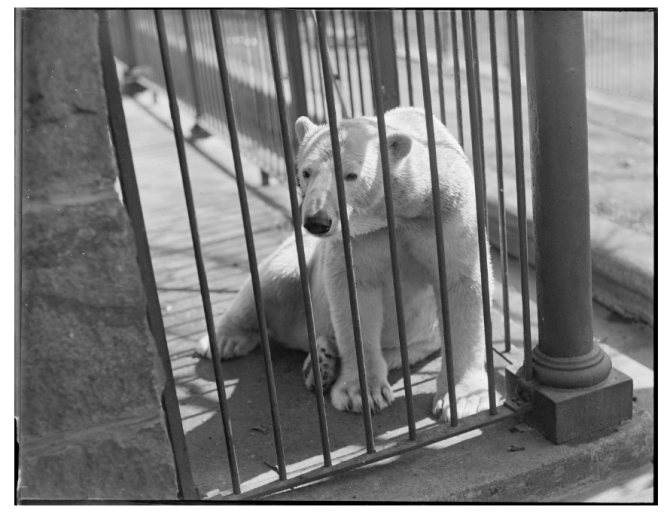
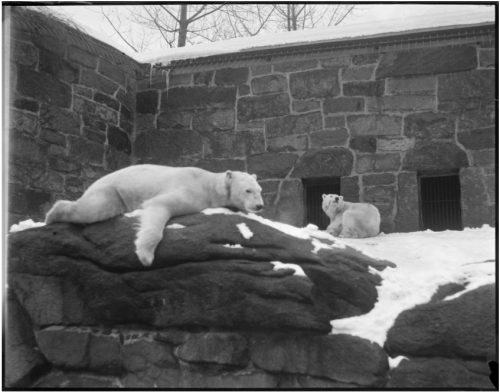

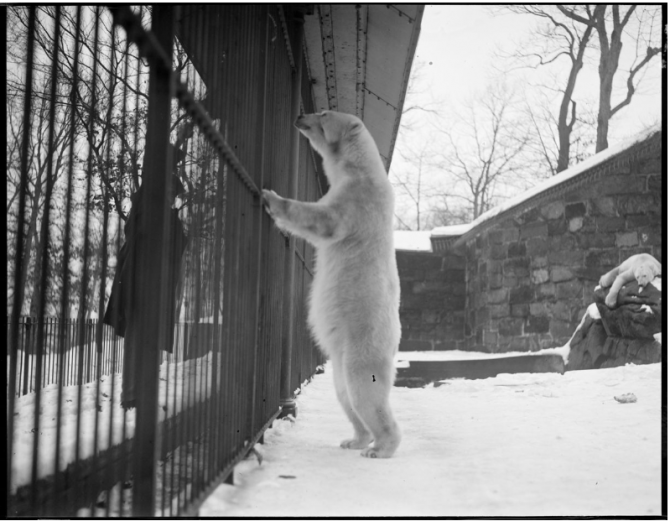

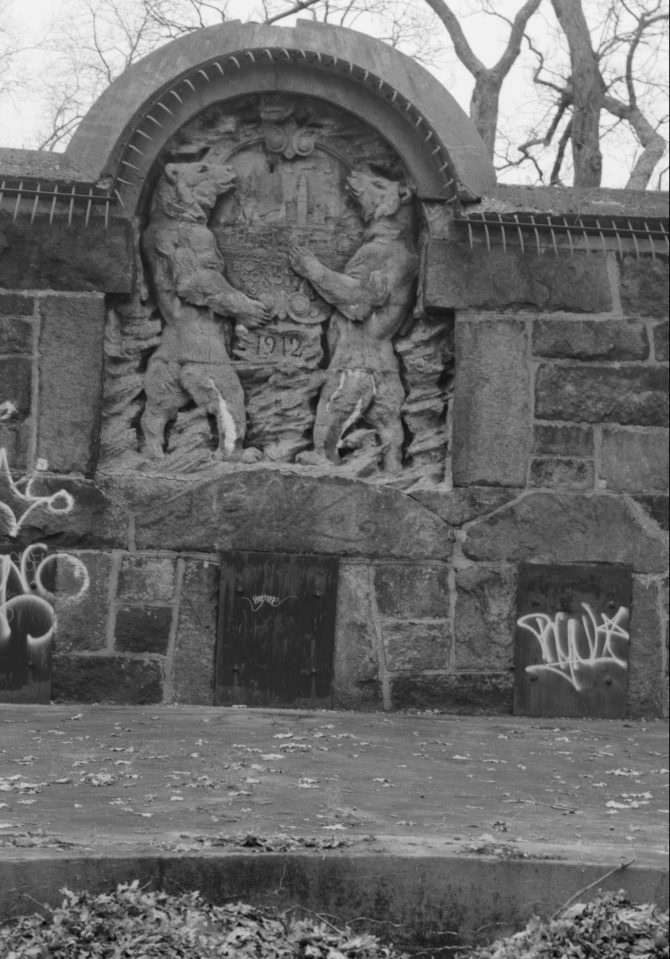

Add a comment to: The Polar Bears of Franklin Park